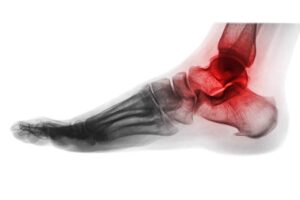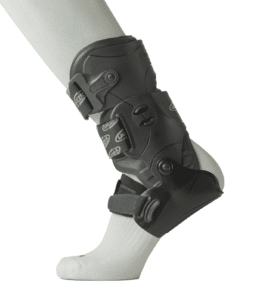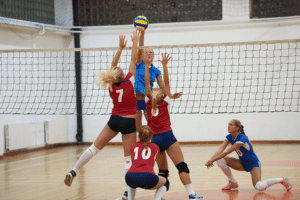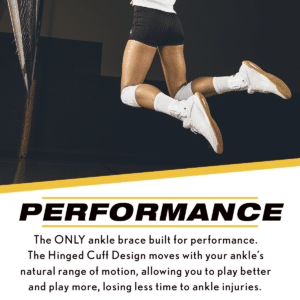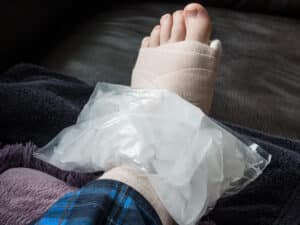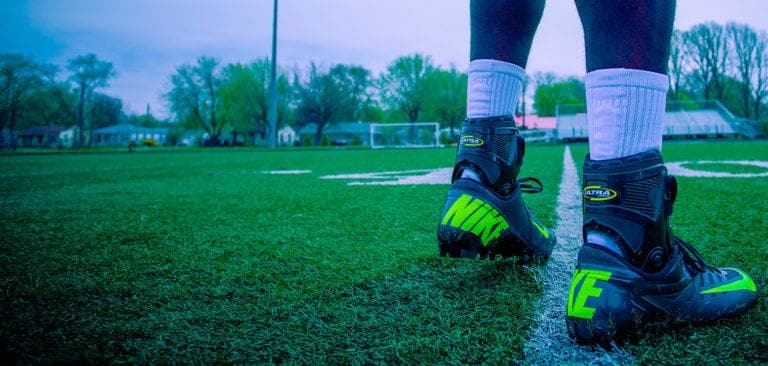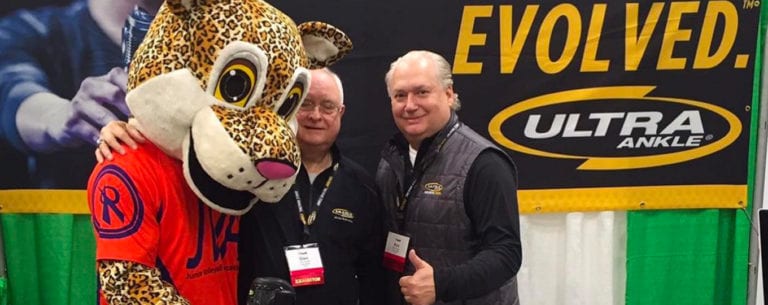Football is a high-impact sport that places intense demands on the body, particularly the ankles. Ankle sprains are the most common sports injury for football players due to the frequent physical contact and dynamic movements of the sport. Ankle sprains can occur from cutting, stepping on another player’s foot or landing from a jump. They also can occur when your ankle gets stepped on or fallen on. This can damage the anterior talofibular ligament (ATFL) and is the most commonly injured ligament in the ankle, usually due to inversion injuries (MDPI).
Ankle injuries can cause pain, loss of playing time, loss of fitness, and potential medical expenses for athletes and/or their parents. Injury prevention programs that include multiple components, such as strengthening and agility/balance exercises, can help reduce the incidence of ankle injuries (Sage Journals). The addition of ankle braces can further reduce the risks of ankle sprains and acute ankle injuries. Lace-Up ankle braces alone have shown to reduce the risk of ankle injuries in football players (NIH).
This blog post will explore the following topics:
- The two primary types of ankle injuries affecting football players.
- The football positions that suffer the most ankle injuries.
- The different types of ankle braces available.
- Ankle brace recommendations based on ankle injury history.
- Recommendations for Ultra Ankle braces.
- How to choose the best football cleats to wear with ankle braces.
Primary ankle injuries affecting football players
There are two main types of ankle injuries football players suffer from the most. Inversion or “Low” ankle sprains and syndesmotic or “High Ankle” sprains. Here is the difference between the two.
- Inversion ankle sprains can stretch and sometimes tear the ligaments holding the ankle joint together, leading to extended bench time that could range from a few days to weeks, depending on the injury’s severity. Even after resting to allow the ankle to heal, the ligaments remain somewhat stretched, making the ankle loose and unstable and prone to future ankle injuries. This cycle of recurring ankle injuries can be interrupted or slowed down by wearing a preventive ankle brace (3CBPerformance).
- High ankle sprains, also known as syndesmotic ankle sprains, are distinct from the more common low ankle sprains. They involve injury to the ligaments that connect the tibia and fibula together. These injuries are often caused by ankle external rotation and/or dorsiflexion trauma, common in high-impact sports like football, rugby, lacrosse and soccer. High ankle injuries are more severe than low ankle injuries and take longer to heal.
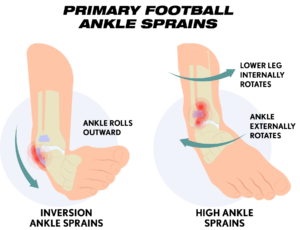
Common Ankle Injuries by Football Position
Ankle injuries can vary significantly depending on the position played. 2,285 football players were recently part of a study (NIH) during an NFL Combine. Of these players, 53.2% had an ankle injury of some form or another. These were the positions who incurred the most ankle injuries.
Running Backs: These players are at high risk for ankle sprains due to the sudden stops and turns they make during practice and games. This study showed that running backs have the highest incidence of ankle injuries at 61.9%. Wide receivers and defensive backs can fall under this same category due to similar movements on the field.
Linemen: Offensive linemen are second in risk percentage of players who suffer ankle injuries at 60.3%. Linemen often suffer from high ankle sprains caused by the heavy physical contact and twisting motions required in their positions.
Quarterbacks: While less frequent, quarterbacks can experience ankle injuries from being tackled or during rapid changes in direction.

Types of Ankle Braces Available for Football Players
There are several types of ankle braces, each offering different levels of support and flexibility.
- Lace-Up Ankle Braces: These braces are made from fabric and lace-up tightly to provide support. While they offer a snug fit and can be tightened as needed, they tend to restrict the ankle’s natural range of motion, which can be detrimental in high-intensity sports like football (NIH).
- Pros: Inexpensive and readily available on-line and/or at most sporting goods stores. They are low profile and fit into almost any football cleat.
- Cons: Restrict natural up-and-down ankle movement, which for any athlete is crucial for running and jumping. The fabric stretches out, migrates, and loses support rapidly during athletic activity. Lace-up ankle braces are also difficult and time consuming to apply.
- Rigid Ankle Braces: Made from hard plastic with hinges, these braces allow for natural up and down ankle movement while preventing excessive side-to-side motion. They provide robust support but can be bulky and uncomfortable to wear for long periods of time.
- Pros: Move with the natural up-and-down movement of the ankle, not restricting performance, speed, agility, or vertical jump. With most rigid ankle braces the straps stay securely in place, maintaining long-lasting support for the duration of practices and games. Rigid ankle braces are typically put on and and removed much more quickly than lace-up braces.
- Cons: Larger or “bulkier” than lace-up braces, requiring more room in the shoe. Because the braces are rigid they do not form-fit to the foot and ankle and can become uncomfortable after long periods of wearing.
- Soft-Shell Ankle Braces: The flexible plastic shell is designed to form a comfortable custom fit to the ankle using body heat. They offer excellent protection while allowing natural movement, making them ideal for prolonged use during practices and games.
- Pros: Move with the natural up-and-down movement of the ankle, not restricting performance, speed, agility, or vertical jump. Through body heat the soft-shell ankle braces form fit to the ankle making them very comfortable and supportive over long periods of time. Soft-shell braces are quick to put on and remove with very little effort.
- Cons: Like the rigid ankle braces, soft-shell braces can be bulkier than lace-up braces, requiring more room in shoes. The soft-shell braces may take a few practices or games to break-in (like a new pair of shoes) before they are comfortable.
When choosing which style of ankle brace you want, or need, be sure to read the next section on our ankle brace recommendations based on ankle injury history.
Ankle Brace Recommendations based on Ankle Injury History
Once you’ve had an ankle injury you are 70% more likely to reinjure it. Of all ankle sprains 40% of them develop chronic symptoms. Chronic ankle instability (CAI) can occur in up to 70% of patients who have recurrent ankle sprains. CAI can have negative health effects, such as reduced quality of life and early-onset osteoarthritis (NIH).
“Many people think, ‘It’s just an ankle sprain.’ But sprains aren’t a ‘nothing’ injury. Many sprains can lead to chronic instability and problems down the road.”
–Gergory Waryasz, MD, CSCS
Sports Medicine Specialist at Mass General Brigham
Depending on how many ankle injuries, and types of ankle injuries, you have incurred, we recommend the following ankle braces:
1-3 Previous Ankle Injuries: For athletes with 1-3 previous ankle injuries, an entry-level ankle brace made with fabric that laces up, called Lace-Ups, might suffice. Lace-Ups with figure-8 straps are preferred as they wrap around the ankle similarly to a tape job performed by an athletic trainer. Think of Lace-Up braces as a reusable tape job that can be applied before every practice and game, eliminating the need for an athletic trainer.
4-5+ Previous Ankle Injuries: For athletes with 4-5 previous ankle injuries, including one or more grade 2-3 injuries, more support is required along with possible medical consultation. For athlete’s with numerous ankle injuries, plastic hinged ankle braces and soft-shell ankle braces offer a structurally sound design that provides additional ankle support needed for unstable ankles (Harvard Medical School).
Best Ultra Ankle® Braces for Different Scenarios
Ultra Ankle® offers a range of braces suitable for various needs. Depending on the type of ankle injuries you’ve had and the number of ankle injuries you’ve sustained, Ultra Ankle has four advanced ankle braces designed to help prevent, treat, and recover from ankle injuries.
- Ultra 360® Lace-Up: The Ultra 360 locks your ankle in place while the figure-8 straps provide 360º of ankle support to help prevent excessive ankle rolling. The multi-adjustable design allows you to customize your level of support. The Ultra 360 is for athletes who require mild ankle support and have a minimal history of ankle injuries.
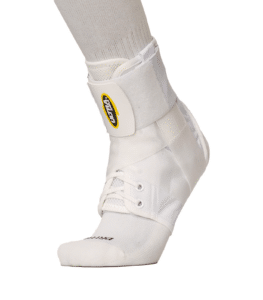
- Ultra Zoom®: The only ankle brace built for performance— you’ll play better and play more, losing less time to injuries with the Ultra Zoom. The Performathane® soft shell forms to you, and has a hinged-cuff design, allowing your ankle to move in all the natural ways while helping to prevent both LOW and HIGH ankle injuries. The Ultra Zoom is on your ankle in seconds, protects continuously for hours and lasts for multiple seasons. The Ultra Zoom is for athletes who play sports with high incidence of ankle injuries and who want increased ankle support while not sacrificing mobility or agility.
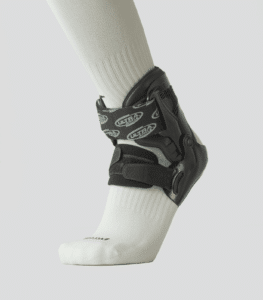
- Ultra High-5®: Designed for athletes who need maximum support, particularly after an injury, and/or multiple injuries. This brace provides robust stability for high-risk movements and is feather-light, and super strong. The Ultra High-5 is for athletes with chronic ankle instability due to a history of multiple ankle injuries and who have recurring joint pain due to excessive pounding on unforgiving surfaces.
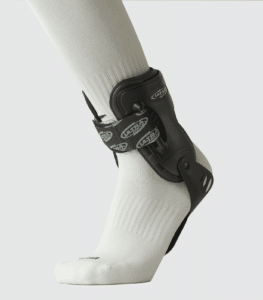
- Ultra CTS®: The Ultra CTS or Custom Treatment System, is designed specifically for athletes who have had a high ankle injury or an acute ankle injury. A high ankle injury occurs when the ankle is excessively externally rotated. The Ultra CTS has a hinged-cuff design which restricts excessive ankle inversion and ROTATION to treat both LOW and HIGH ankle injuries allowing the injured soft tissue to quickly heal. With an acute ankle injury you will most likely have weight bearing pain. The Ultra CTS will “unload” the ankle. Ankle unloading means the brace will absorb some of the impact from standing or walking that would normally be transferred into the ankle causing pain. Maximum lower leg and ankle support and stabilization will take stress off the injured ligaments allowing them to heal much quicker.
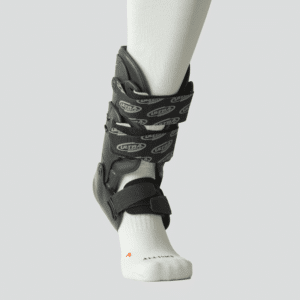
Ankle Braces and Football Cleats
For any type of football shoe/cleat, it is recommended the shoe have “traditional tongue and laces.” These shoes allow the laces to spread out enough to fit the ankle brace inside the shoe. They offer the best fit for any type of ankle brace. What is not recommended is a shoe with a “sleeve or collar design.” These shoes lack a traditional tongue, making the opening much smaller and very difficult to fit the ankle brace inside. Depending on your ankle injury history, you must first determine the type of ankle brace you need and then select the style of football cleat that fits best with that ankle brace.
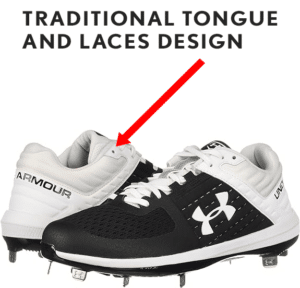
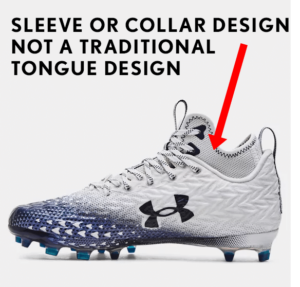
Conclusion
Ankle braces are a vital component of a football player’s gear, providing essential support and reducing the risk of injury. By understanding the types of braces available, the common injuries per position, and how to pair braces with the right cleats, players can enhance their performance and safety on the field. For the best results, consider using Ultra Ankle braces tailored to your specific ankle condition and injury history.
